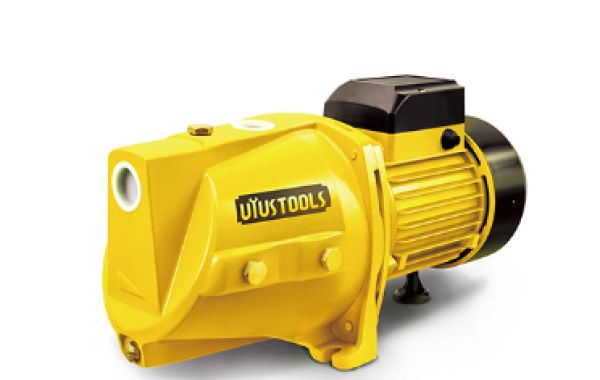Are you struggling with low water pressure in your home or business? A peripheral pump might just be the solution you need! With so many types of pumps available on the market, it can be overwhelming to choose the right one for your specific needs. But don't worry, we've got you covered! In this blog post, we'll guide you through everything you need to know about choosing a suitable peripheral pump that will increase your water pressure efficiently and effectively. So sit back, grab a cup of coffee and let's dive into the world of peripheral pumps!
Different types of peripheral pumps
Peripheral pumps come in different types, each designed to cater to specific needs. The most common types are centrifugal and self-priming peripheral pumps.Centrifugal pumps use a rotating impeller that forces water towards the pump outlet through a curved casing. These are ideal for boosting water from shallow wells or underground tanks as they can push water vertically up to 25 feet.Self-priming peripheral pumps, on the other hand, work by creating a vacuum in the suction pipe so that air is pushed out and replaced with water before starting the pumping process. These are useful for situations where there may be some air in the inlet pipes.Peripheral booster pumps have also been developed with an added pressure switch feature that automatically starts/stops when needed without switching off manually. They're great for use in irrigation systems, fountains or washing machines.It's important to choose a pump type based on your specific requirements and budget constraints.
What factors to consider when choosing a pump
When choosing a peripheral pump to increase water pressure, there are several factors that you need to keep in mind. Firstly, consider the flow rate of your water source and the amount of pressure boost required. This will help determine the size and power of the pump needed.Another factor to consider is whether the pump will be used for domestic or commercial purposes. If it's for domestic use, a smaller and less powerful pump may suffice. However, if it's for commercial use such as irrigation or industrial applications, a larger and more powerful pump would be necessary.It’s important to also think about the type of material used in constructing the pump. A good quality stainless steel construction can make all the difference when it comes to durability and longevity.The ease of maintenance should also be considered since pumps require regular servicing like cleaning debris from impellers or replacing worn-out parts.Take into account your budget constraints so you can select a suitable option without overspending on features you don’t need while ensuring you get high-quality products with warranties that guarantee its efficiency over time.
Which pump is best for you?
Choosing the right peripheral pump is essential in increasing water pressure. With several types of pumps available, it can be challenging to determine which one suits your needs best. Here are some factors to consider when selecting a pump:Firstly, determine the amount of water you need and its flow rate per minute. This information will help you choose a pump with the appropriate horsepower and discharge capacity for your specific requirements.Secondly, consider the type of fluid that will be pumped through the system as different fluids may require different materials for construction.Thirdly, evaluate your budget. Peripheral pumps come in different prices depending on their features, so it's vital to select one within your financial means.Keep in mind any additional features such as automatic shut-off or adjustable speed settings that may make operation easier and more efficient.Choosing a suitable peripheral pump involves considering several factors such as water demand, fluid type, budget and desired features. By assessing these elements carefully before making a purchase decision, you can ensure optimal performance from your chosen pump while saving money over time on maintenance costs and energy consumption.
How to install a peripheral pump
Installing a peripheral pump may seem like a daunting task, but with the right tools and knowledge, it can be done easily. The first step is to choose the location where the pump will be installed. Make sure it's in a dry area that's easy to access for maintenance.Next, shut off all power sources and drain any water from the system before installation. It's important to use Teflon tape or thread sealant on all threaded connections to prevent leaks.Connect the inlet pipe from your water source to the suction side of the pump using appropriate fittings. Then connect an outlet pipe on the pressure side of your pump, making sure it leads directly to your application without sharp bends or kinks.Once everything is connected properly, turn on your power supply and prime your peripheral pump by pouring water into its housing until it fills up completely through priming plug opening.Check for any leaks or unusual noises coming from your new installation before testing out how well it works!
Conclusion
To conclude, choosing the right peripheral pump to increase water pressure can be a daunting task, but with careful consideration of the factors mentioned above, you can make an informed decision. Remember to identify your specific needs and requirements, as well as your budget before making any purchase. Always choose a reputable brand or supplier that offers quality products and excellent customer support.Installing a peripheral pump may seem like a complex process, but it's relatively straightforward if you follow the manufacturer's instructions carefully. If in doubt, seek professional assistance from an experienced plumber or technician.With the right peripheral pump installed correctly and maintained regularly, you'll enjoy consistent water pressure and flow rate for years to come. So take your time when choosing a suitable pump; invest wisely in quality equipment that will serve you well over its lifetime.Please contact us,if you need.sales@hantoo.com.cn








